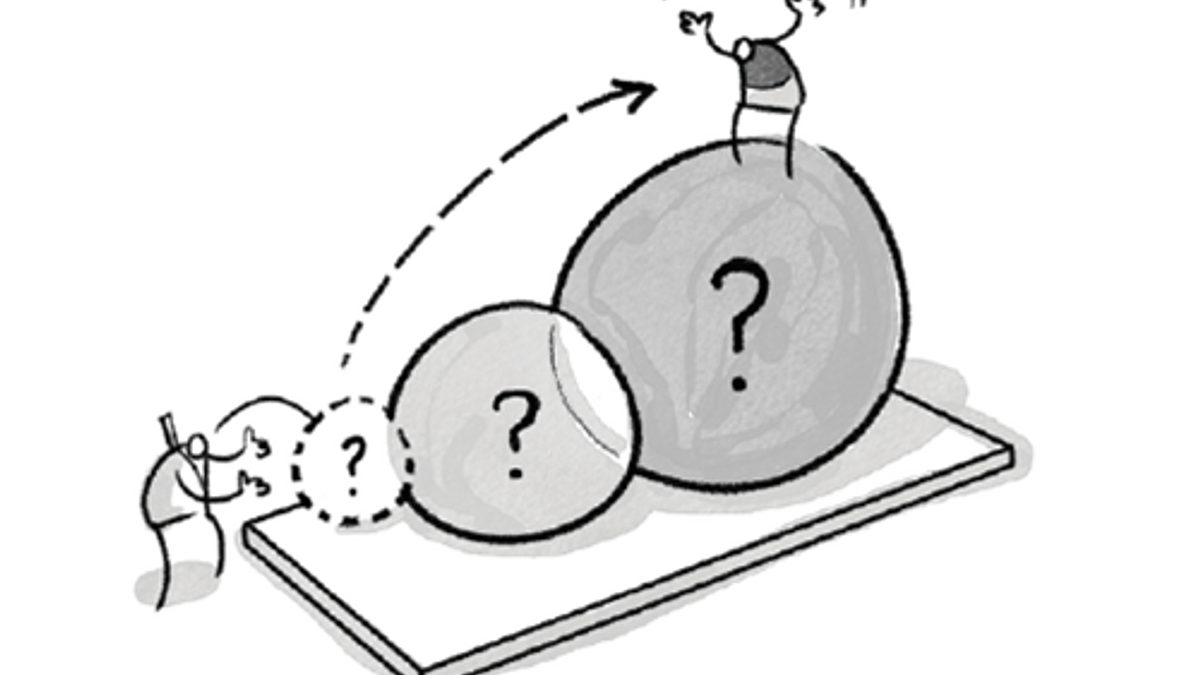

Research School Network: Questioning In the fifth part of a series of blogs on Durrington’s six teaching principles, Chris Runeckles explores questioning.
—
Questioning
In the fifth part of a series of blogs on Durrington’s six teaching principles, Chris Runeckles explores questioning.
Share on:

by Durrington Research School
on the
Questioning takes the place of the final of the six principles not due to any reduction in importance in comparison to the other principles, but due to its ubiquity. Similarly to challenge, questioning will pervade everything we do as teachers. The preceding four principles (explanation, modelling, practice and feedback) will tend to take a position within a learning cycle. We will often explain first, model prior to practice, insist on practice when students are ready to take something on themselves and give feedback once we’ve established what students do or do not know. Questioning however, we use throughout, sometimes to punctuate a process, sometimes as a standalone strategy that may continue for 20 minutes.
If explanation is perhaps the master skill of a teacher then questioning is its closest companion. While we use questioning in in a multitude of ways, it is our most powerful tool for deepening learning, as it provides a mechanism for elaboration. Since the time of Socrates over 2000 years ago probing questioning has been used to challenge students to think deeper, and encourage teachers to never accept incomplete answers. This concept of constantly asking students to elaborate is at the core of all great teaching, as it elevates the topics we teach beyond the abstract.
Elaboration is not the only function of questioning however, and when considering the purpose of questioning we can categorise questions into five main functions:
1. To test understanding of a new concept.
2. To deepen and develop understanding.
3. To ensure that students take a share in the cognitive work of the classroom.
4. To help you form and sustain your classroom culture.
5. To create curiosity.
Of these, the first two are our most common purposes for asking questions. Often we might ask slightly narrower, or closed, questions to test understanding, and more complex, open questions when we wish to deepen and develop understanding. As part of an excellent review of the research evidence around classroom questioning researcher Kathleen Cotton defines these two types of questions as lower cognitive questions and higher cognitive questions . Lower cognitive questions are essentially about knowledge recall whereas higher cognitive questions require students to manipulate their knowledge in order to support a logically reasoned response. This simplified coding of questions also helps give clarity to our aims when questioning.
To give an example from English Literature, a closed question might be:
Which character in Lord of the Flies is the voted as leader in the beginning?
While a higher cognitive question would be:
What qualities does he possess that lead to his struggle to maintain his leadership?
Both are essential and should therefore not be seen as necessarily better or worse than each other, rather that they perform different functions. Cotton’s review reveals that lower cognitive questions are more useful to improving recall or committing new knowledge to memory. Therefore, most should elicit the correct response in order to avoid misconceptions being embedded.
The importance of higher cognitive questions is to deepen understanding. As previously mentioned this forms an essential phase of teaching as we develop students’ knowledge beyond the basic facts, allowing them to enter into discussion, and ultimately form judgements.
The review also found that about 60 percent of questions asked by teachers were lower cognitive, about 20 percent higher cognitive and about 20 percent procedural. Ideally this ratio would alter to see a greater proportion of higher cognitive questions asked. However, this would be contingent on the class and the context. For example if you were recapping a large section of the curriculum you may choose to ask a greater proportion of lower cognitive questions.
Furthermore, Cotton addresses the importance of pausing after asking questions. Her review of the research shows that the average wait time between a teacher asking a question and a student answering is about 1 second. However, to get the most positive benefits; for lower cognitive questions this should be increase to 3 seconds, and for higher cognitive questions, even longer than that, with no particular upper limit . Therefore we should aim to add a significant pause for thought after posing our questions. This pause should also come before we select the student to answer. As soon as the name of the student is mentioned all other students are off the hook in terms of being forced to think of an answer. Therefore the structure should be: question, pause, name.
Equally, you could allow some think, pair, share time here and give students 30 seconds to discuss the answer with the person sitting next to them. Either way we should aim to leave a longer gap after each question. Part of your ability to do this will be based on having clear questioning expectations and not allowing students to call out.
Reflective Questions
• Do you have a clear vision for how you want questioning to run in your classroom?
• What is the split between lower cognitive and higher cognitive questions?
• Do you insist on students elaborating on their initial answers?
• Do you allow enough thinking time after asking your questions?
More from the Durrington Research School
Show all news

The Evidence Base behind Attendance Interventions
The importance of attendance means that there is a growing demand for a review of the research into attendance interventions.

Metacognition and self-regulation in geography
Head of geography Sam Atkins explains how he has been helping students develop their metacognitive regulation .